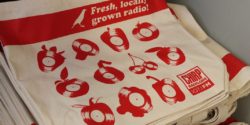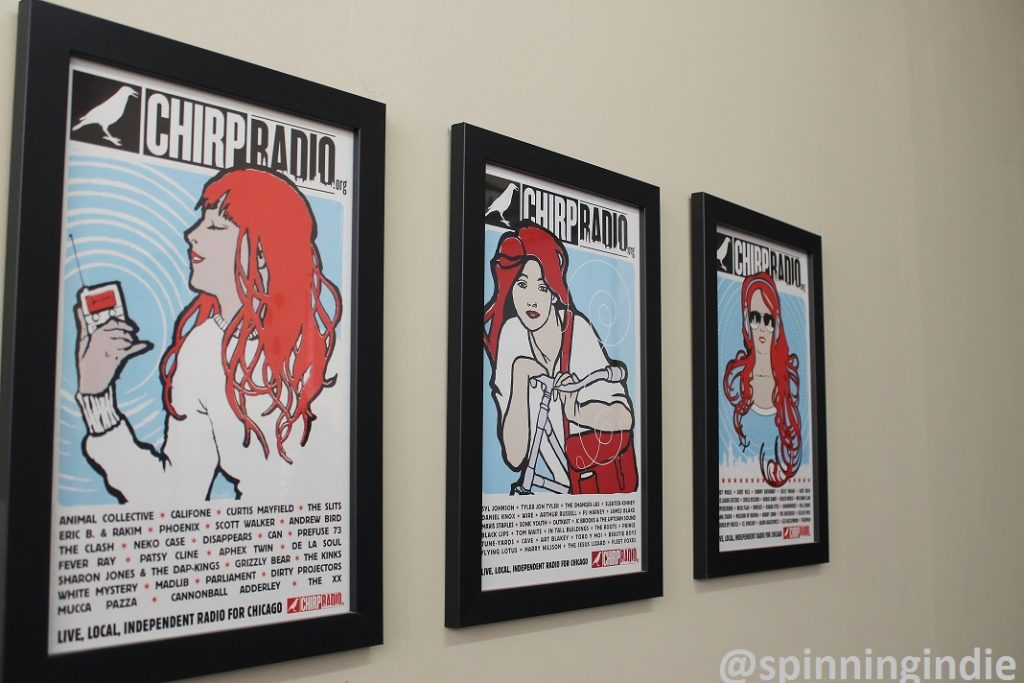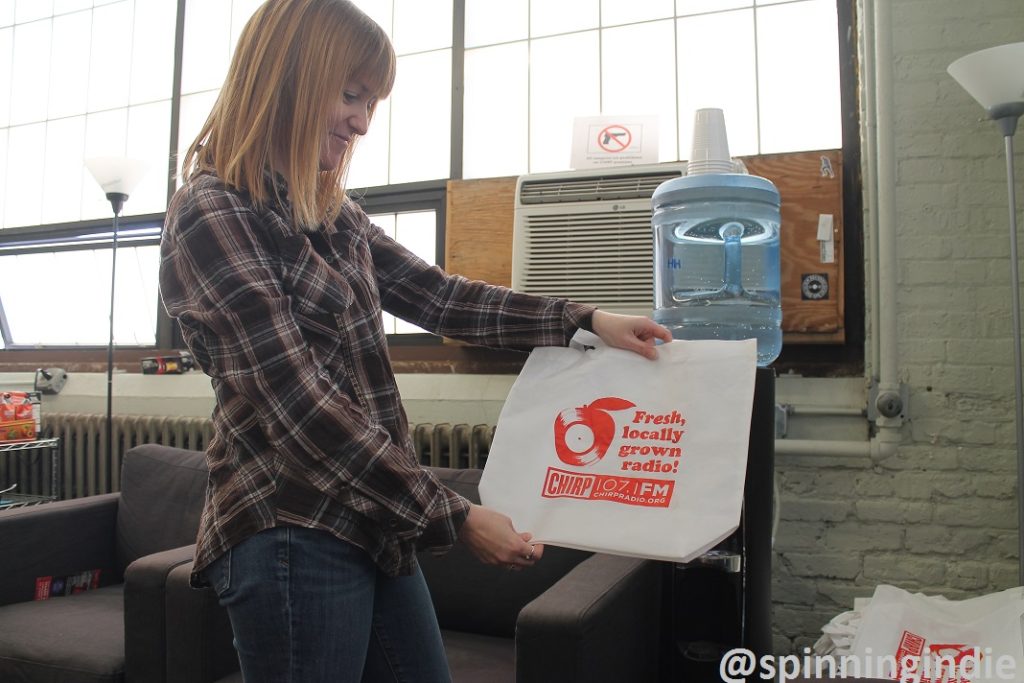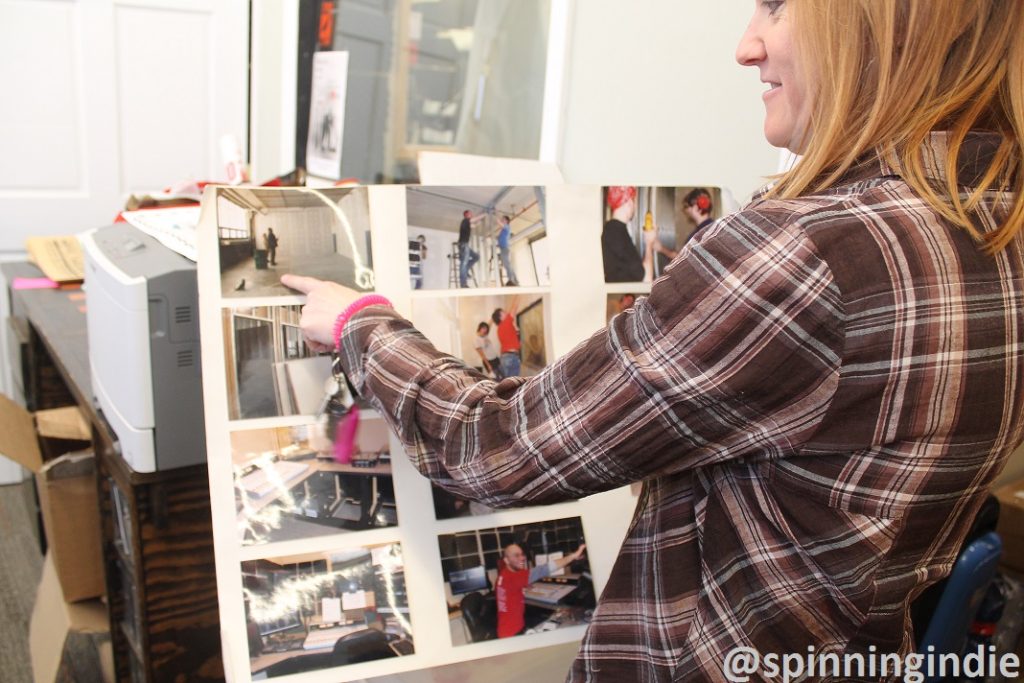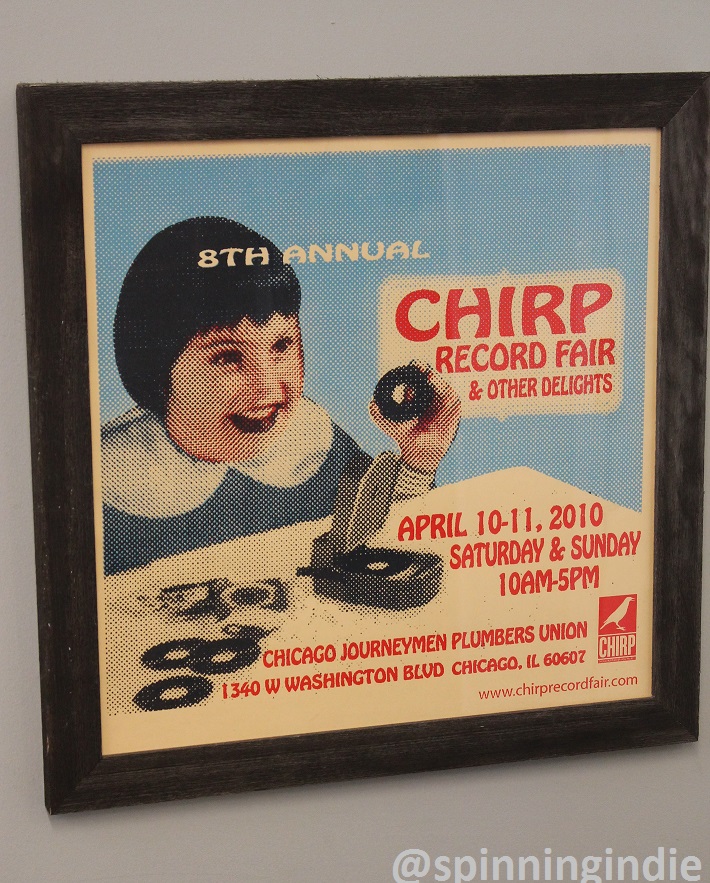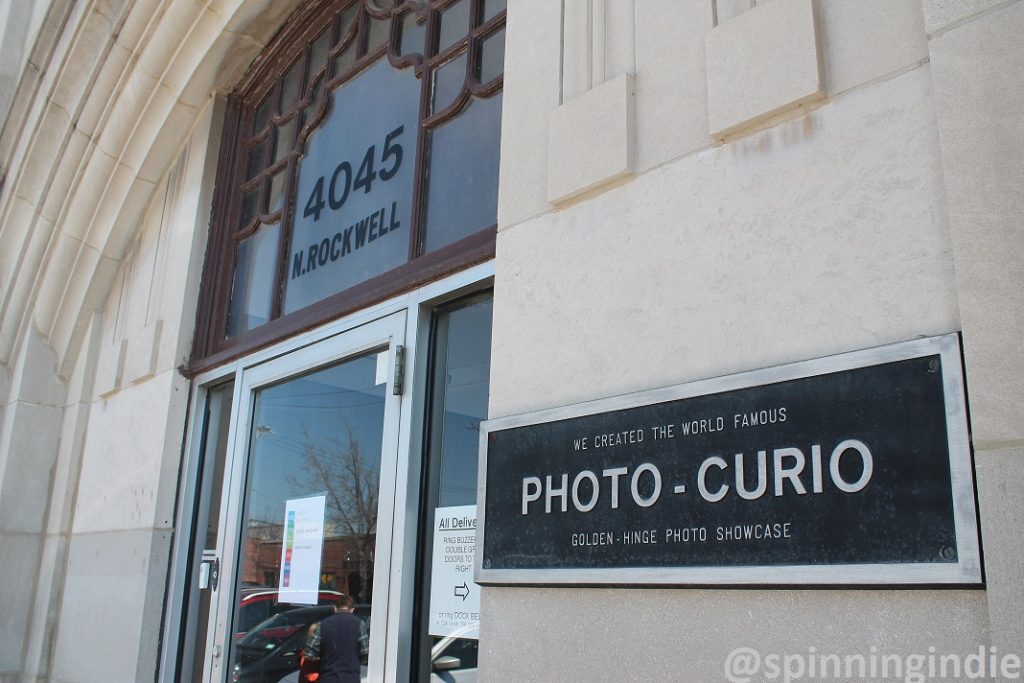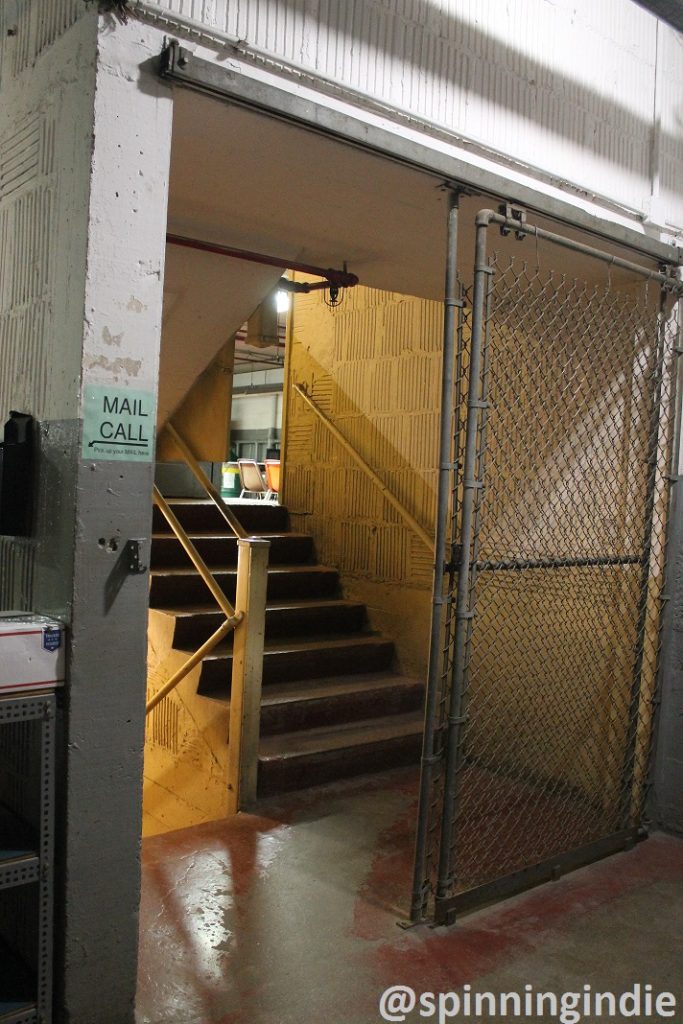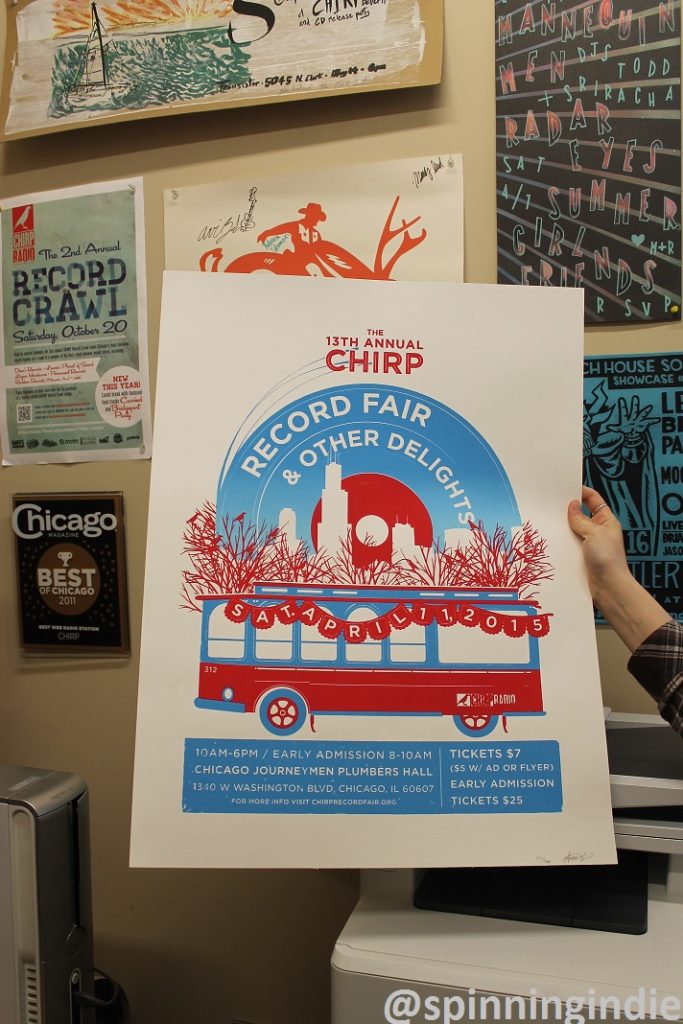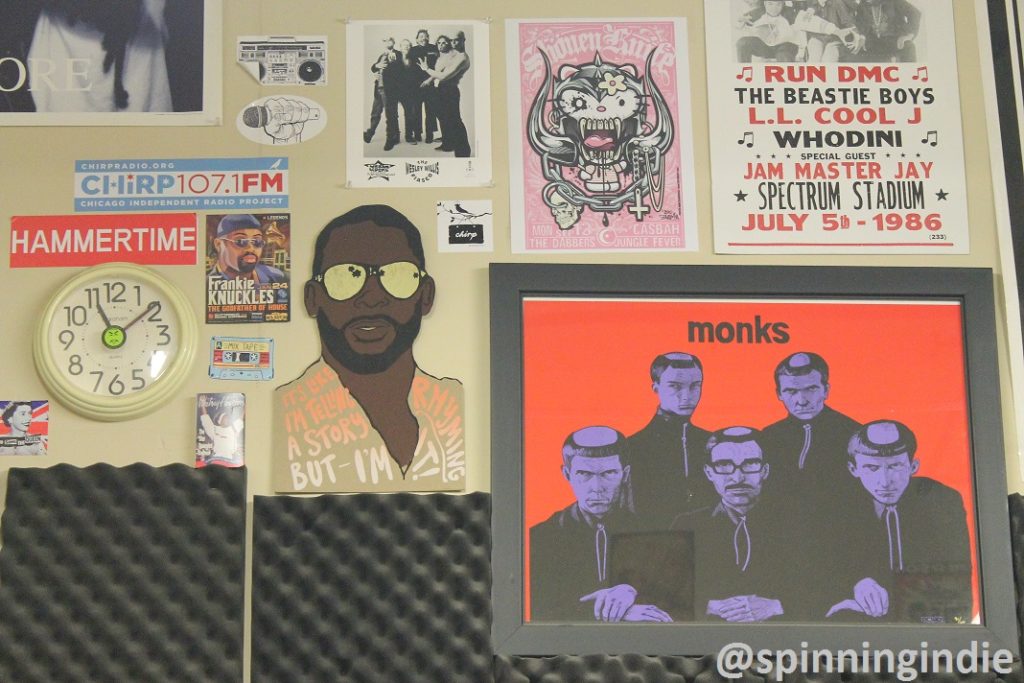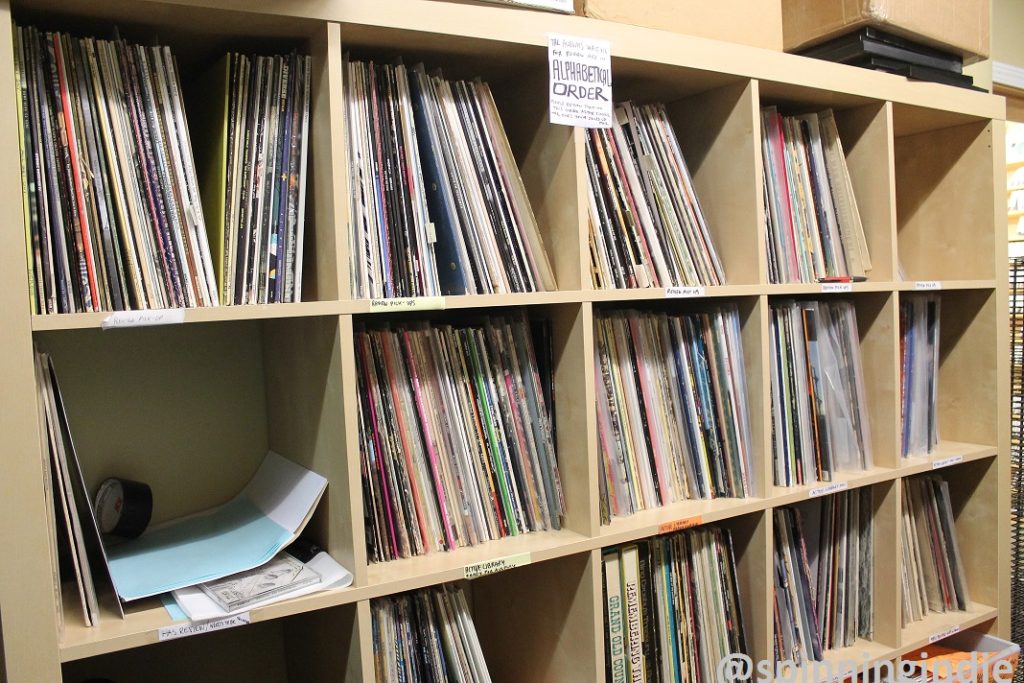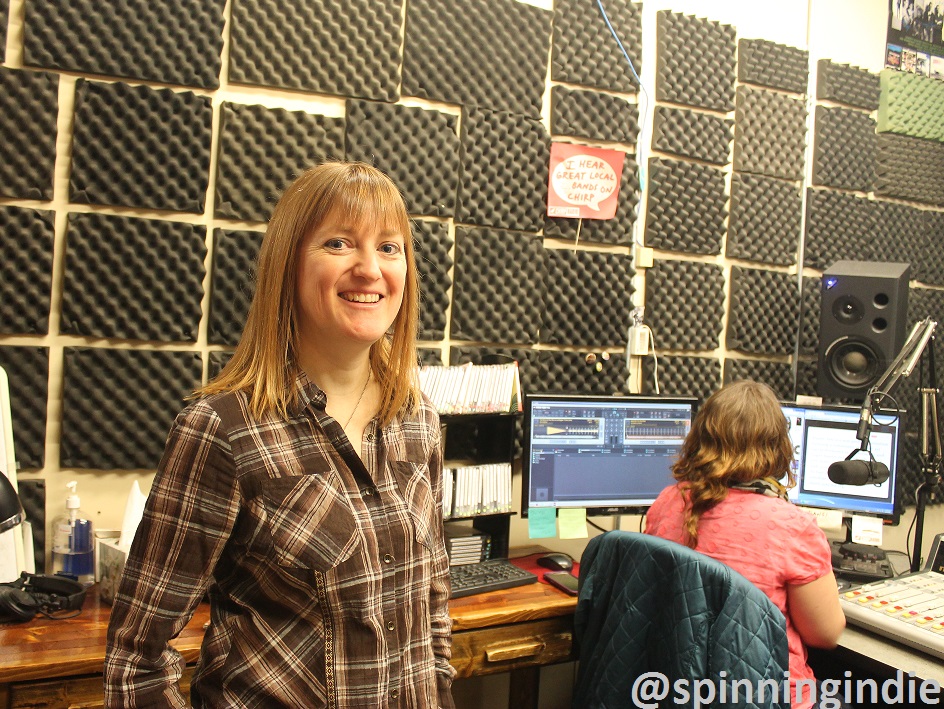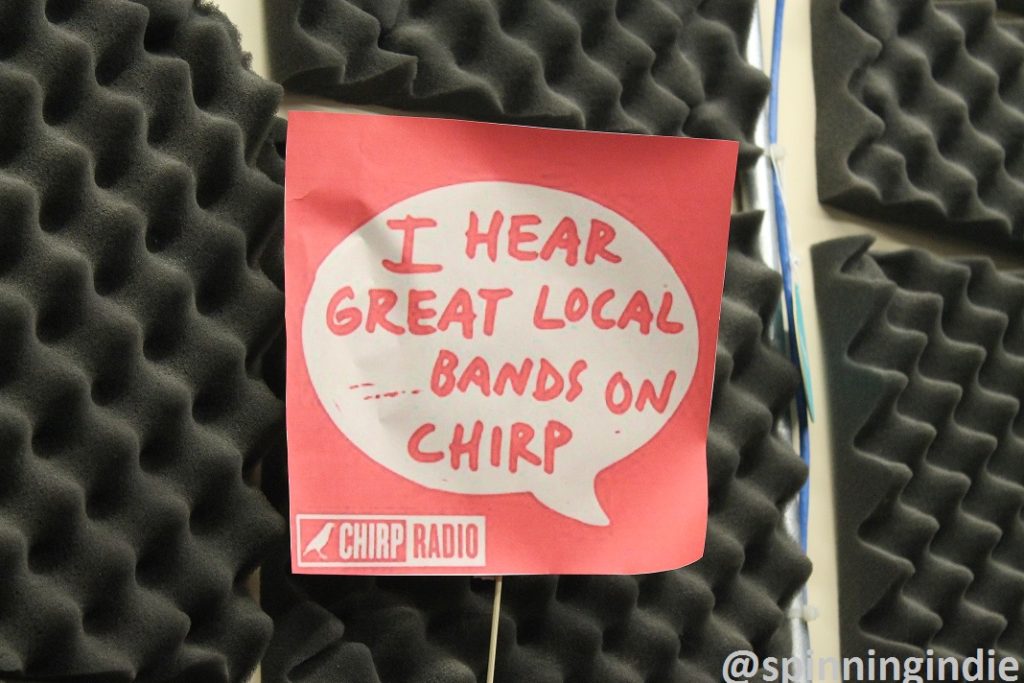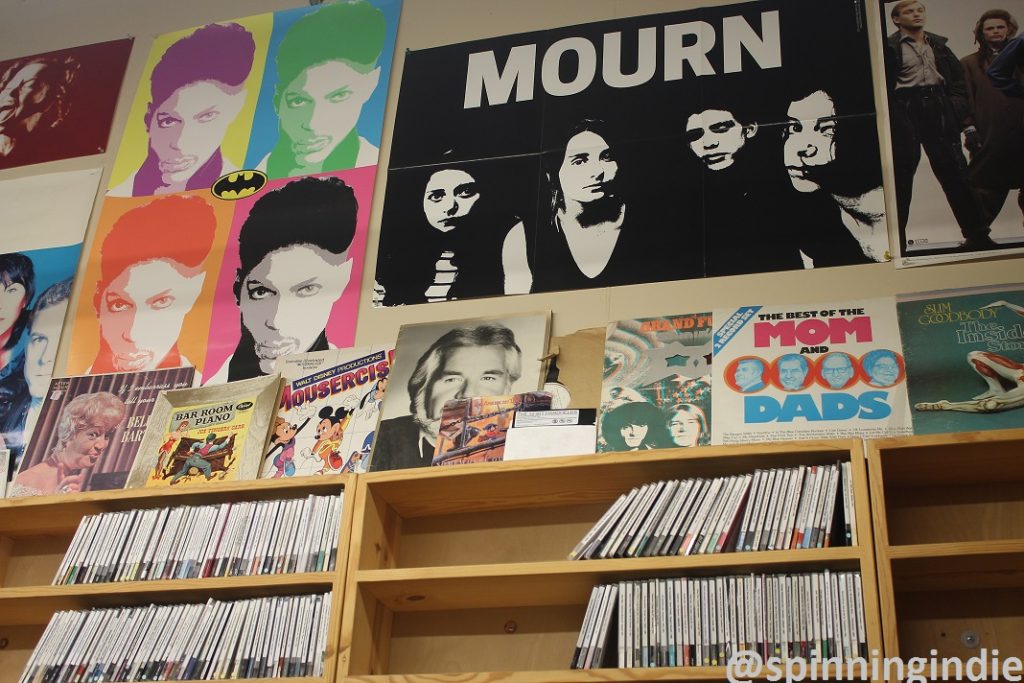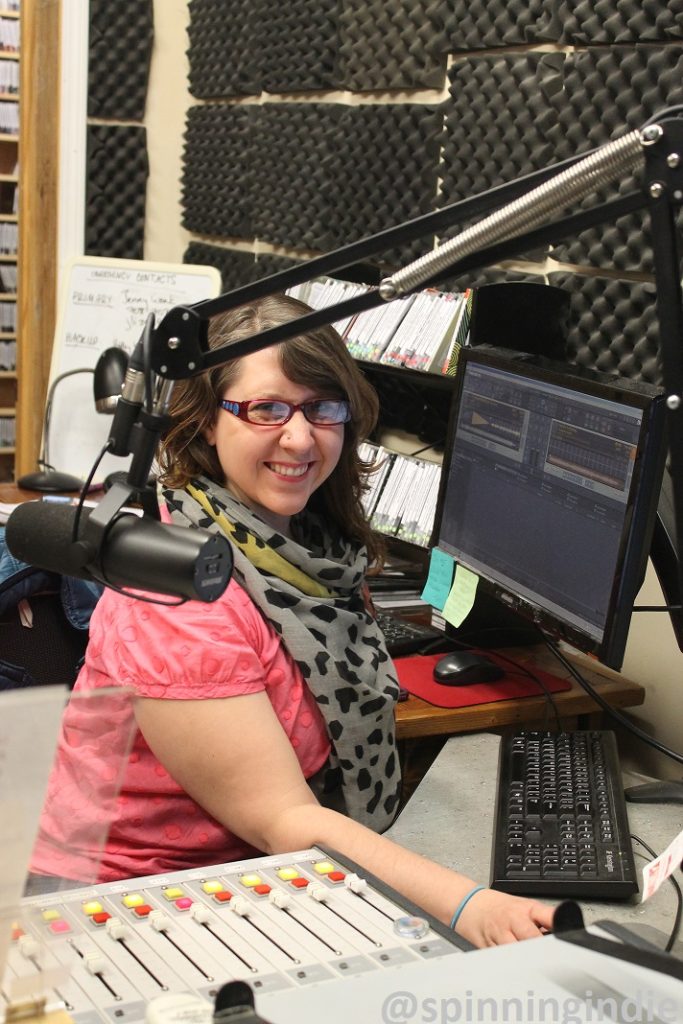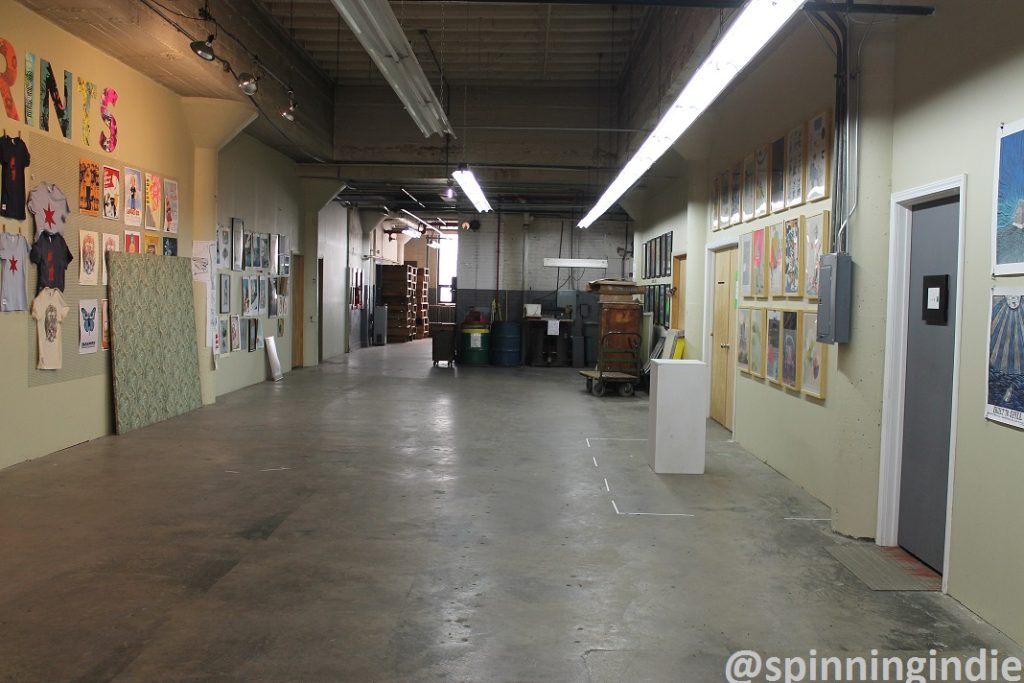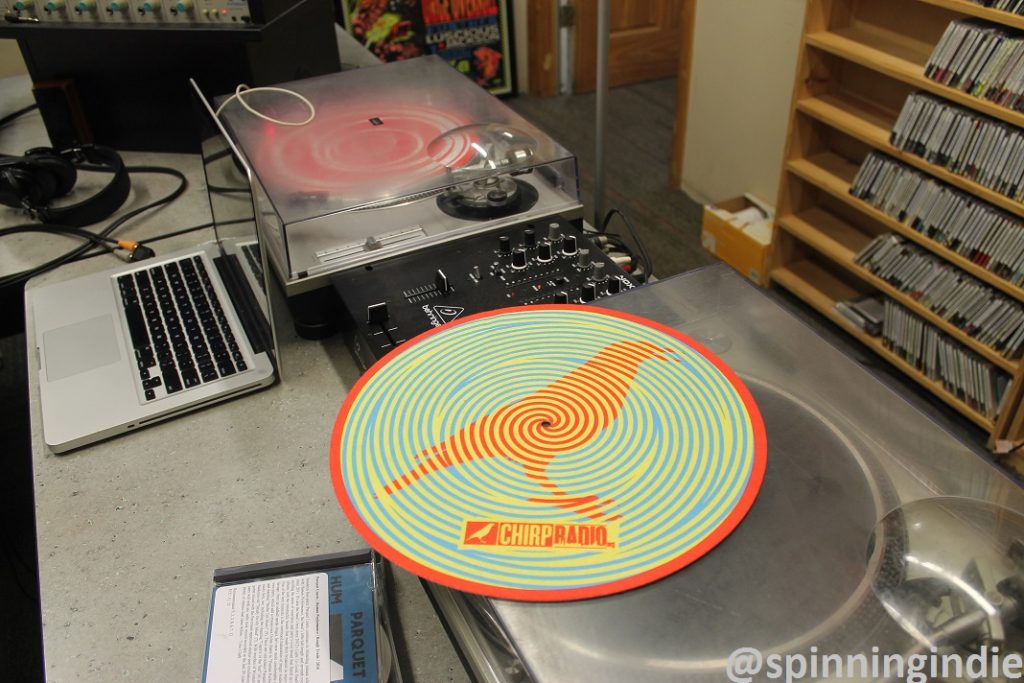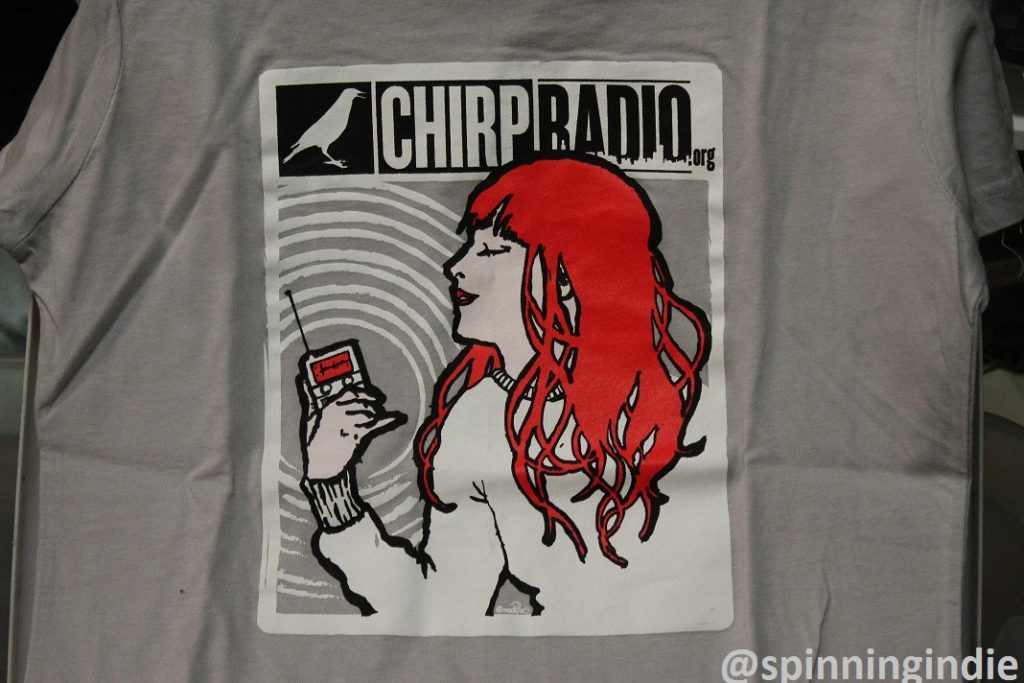On a trip to Chicago this spring, I was excited to finally visit CHIRP Radio. The online community radio station was established by the Chicago Independent Radio Project (thus, the moniker CHIRP) and is now the holder of a construction permit for new low power FM (LPFM) radio station WCXP-LP at 107.1 FM in Chicago. Founder and General Manager Shawn Campbell graciously toured me (and my family) around the station on Friday, April 15, just before lunch-time.
This month marks the 9th anniversary of CHIRP, which was born as an idea in 2007 and led to the creation of a streaming radio station in 2010. Some of the early members of CHIRP had been at Loyola’s college radio station WLUW (see my station tour) when it was community-run, including Campbell, who was its Program Director. After some changes at the station, a number of people left WLUW and worked to start CHIRP as an alternative. This group also helped to advocate for the Local Community Radio Act, which resulted in the opening up of more frequencies on the dial during an LPFM application window in fall 2013. Campbell reminisced about those days, telling me, “We went to DC and lobbied” and also shared that it led to a 2009 meeting at the White House.
She’s got to feel an incredible sense of satisfaction as the station makes preparations for its impending launch over 107.1 FM (the exact date has yet to be determined). Campbell pulled out photos of the build-out of CHIRP’s current location, telling me that volunteers (there are around 240 of them at CHIRP) worked hard to create the space, from putting up the wall studs, to laying carpet, and installing dry wall. She added that “one early volunteer liked to point out that his blood was literally in the walls at CHIRP.”
From the very beginning, volunteers have been vital to CHIRP. Campbell explained that between 2007 and 2010 they were “raising funds and raising awareness.” In the early days CHIRP had a MySpace page and held monthly meetings in the back of an ice cream shop. Gradually more and more people got involved and within 8 months between 50 and 60 people were showing up at meetings, even though there was no radio station. Initially, the campaign for LPFM was the focus; but eventually there was also interest in starting out as a streaming radio station. By the end of 2009, CHIRP had moved into and built the space that it is currently housed in and its stream launched in January, 2010.
And the space, I might add, is amazing. Located in Chicago’s North Center neighborhood, CHIRP’s station is tucked away in a corner of a historic warehouse, affectionately known as “the factory,” that used to be home to a photo album factory. A plaque on the front of the building proclaims, “We created the world famous PHOTO-CURIO golden-hinge photo showcase.”
The sign on the century-old warehouse hints at the creative industries that have been and continue to be a staple of the building. Campbell led us past pallets stacked with brown paper-covered packages and took us up a few flights of stairs to the Chicago community radio station’s third floor perch. Down the hall from rehearsal spaces and numerous screen printing studios; CHIRP has access to a large open space outside the printing studios for live music recordings, which later air on CHIRP radio.
After walking into CHIRP Radio’s space, it’s clear that the radio station has tapped into the same broader creative community that it shares its warehouse space with. A variety of beautiful CHIRP posters cover the station walls and every promotional items that I spotted at the station seemed to have been designed by a talented artist. Campbell gave credit to the work of CHIRP’s huge volunteer staff (there are only two part-time paid staff), telling me that the volunteers are critical to the station’s success, doing everything from developing partnerships to doing design work to building custom software.
Campbell told me that the high level of volunteer commitment at CHIRP is something that makes the station unique. She said that because of all of the volunteers they are able to take on a lot of projects. She added, “People assume that we’re a lot bigger than we are” and said that she’s amazed when people talk about CHIRP in the same breath as bigger budget stations like KEXP (see my tour here) and the Current. “We’ve been so fortunate,” Campbell relayed and she pointed out that being in a big city has also helped because they are drawing from a larger pool of potential volunteers. Fundraising is still critical and she said, “We do a lot with a little.”
For Campbell, radio has always been a huge passion. She told me, “radio was the only thing that I ever wanted to do” and explained that she realized that at around the age of 10 and went from wanting to be a ballerina to wanting to work in radio. She got her start in college radio at North Central College’s radio station WONC (see my tour here) and initially wanted to be a sportscaster, calling games in college. She was always really into music as well and her first professional radio job was doing an overnight radio show at alternative rock radio station WIIZ (which was dubbed “the Wizard”). Later, she was promoted to Music Director of that station.
Her college radio past is something that she has in common with many of the volunteers at CHIRP. According to Campbell, the station is made up of “a lot of former college radio people” and she told me that many have said that they thought that radio was something that they would never have the chance to do again. This sentiment rings true for recent college graduates to those who did college radio 30 years ago. Campbell added that she had just trained a new DJ who had started in college radio in 1982. When I asked what college radio stations people had come from, Campbell said that it was a range and included more than a few from University of Wisconsin, Madison’s WSUM, KCOU at University of Missouri-Columbia, Northwestern University station WNUR (see my tour here), her alma mater WONC, as well as other stations.
Volunteers at CHIRP are a varied lot, spanning from 18 year olds to retired folks, with the average age just below 30. Campbell said that CHIRP is “full of millennials” and added, “these are people who find us.” The station has new volunteer orientations three times a year and there are typically between 50 and 60 attendees at each session. Campbell opined, “There’s still a lot of passion for radio” and characterized the volunteers, saying, “they catch the [radio] bug somewhere…most likely at a college radio station.” She also acknowledged that some people come to radio from different directions, including through music scenes and she said that the station has also attracted musicians and people who have worked at record labels. It’s not surprising, then, that CHIRP is quite supportive of local music. In fact, DJs are required to play local music every hour.
According to the CHIRP website, “CHIRP Radio plays a wide mix of local, independent, lesser-heard, and just generally good music from a variety of genres and eras. CHIRP DJs are true music fans who love to share their discoveries, new and old, with listeners. The station also features conversations with artists, activists, and other people doing interesting work, and our features department produces pieces highlighting Chicago’s diverse voices and stories.” CHIRP definitely feels like a music-oriented radio station and its walls are filled with band and show posters. Campbell didn’t know the back story on many of them, telling me that posters mysteriously appear on the walls and that people collectively decorate the shared space.
Live DJs are on the air from 6am to midnight, for the most part, and programs are typically two or three hours long. A handful of DJs have done midnight to 3am and someone even tried doing a midnight to 6am show. Campbell said that they don’t air any pre-recorded programming and don’t use automation software, so when listeners tune in to the station, they will always hear a live person on the air when the station is broadcasting. She hopes that one day the station will have live DJs 24 hours a day.
The day that I visited, the station was just coming off of a fundraiser and there were tote bags full of promotional items ready to ship off to donors. It was a busy week, as CHIRP was also preparing for a Record Store Day event the following day. A DJ was in the booth doing her show and Campbell toured us around the space, taking us through the lobby, a shared office, on-air studio, production studio (which was shrouded in plastic due to a recent flood), record library/storage room, and the nearby communal space (“the factory space”) in the warehouse. Nearby tenants include numerous screen printing studios and rehearsal spaces.
The “factory space” has been home to some CHIRP performances, dubbed the “CHIRP Factory Sessions.” The most recent session prior to my visit (the station’s 10th) featured John Langford and Sally Timms. Episodes are recorded and videotaped and air on CHIRP a few weeks later. A local production company produces and edits the videos, which can be seen on the CHIRP website. An interesting part of the series is that performers are kept secret until a few days before the performances are released on CHIRP, which helps to build excitement and curiosity about their identities.
As a soon-to-be LPFM in a densely populated urban area, CHIRP has a huge potential audience, which Campbell estimates at around 1 million people. She said that CHIRP has been sorely needed, as Chicago was one of the biggest cities in the country without an independent community radio station. CHIRP is working hard to prepare for its future LPFM launch, with the exact date still to be determined. Campbell explained the importance of terrestrial radio, telling me that 93% of all adults listen to radio each week. She said that terrestrial radio “has always seemed essential” and that when she talks about CHIRP Radio, the first question that she always gets asked is, “what number on the dial is it?” She told me that interest drops off when people hear that the station is online-only, pointing out that it’s “something about the legitimacy” and that that concept is still “embedded in people’s brains.” In thinking about the eventual launch of CHIRP over 107.1 FM, Campbell said, “We DO think that the broadcast signal will expand our audience.”
Thanks so much to Shawn Campbell for showing me around CHIRP and sharing the station’s story with me. This is my 105th station tour report and I have a couple of more visits remaining in the queue. See my most recent field trips on Radio Survivor and see a full list of my station tour reports on Spinning Indie. September 13 update: Hear more about my visit to CHIRP on Radio Survivor Podcast #60, which also includes portions of my audio interview with Campbell.

